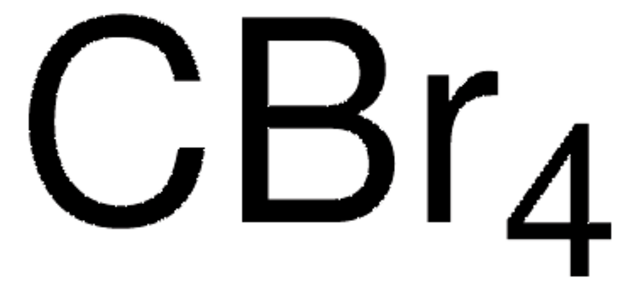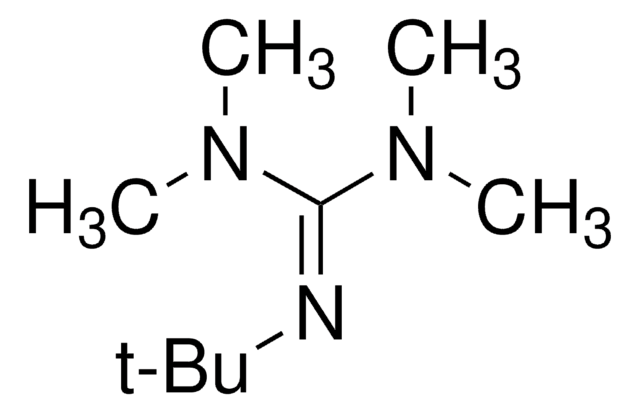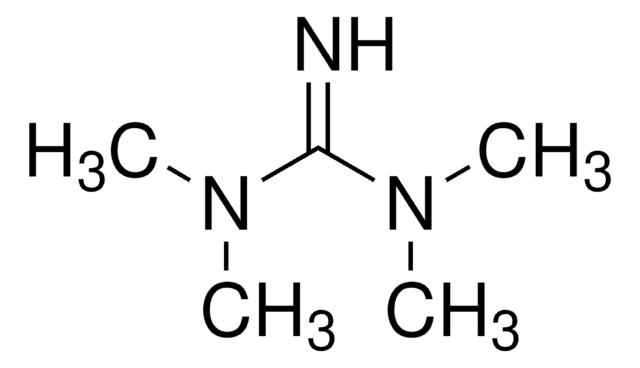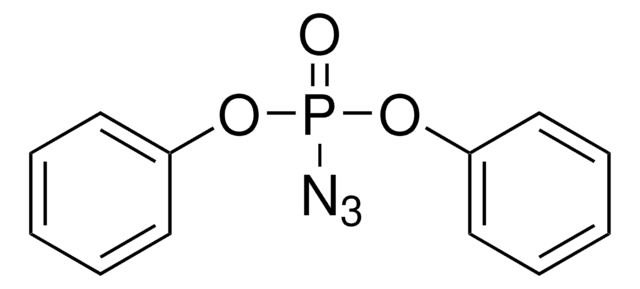8.03282
1,8-Diazabicyclo[5.4.0]undec-7-ene
for synthesis
Synonyme(s) :
1,8-Diazabicyclo[5.4.0]undec-7-ene
About This Item
Produits recommandés
Pression de vapeur
0.02 hPa ( 25 °C)
Niveau de qualité
Forme
liquid
Température d'inflammation spontanée
260 °C
Puissance
215-681 mg/kg LD50, oral (Rat)
Limite d'explosivité
1.1-6.5 % (v/v)
pH
12.8 (20 °C, 10 g/L in H2O)
Viscosité cinématique
5.48 cSt(40 °C)
Pf
<-70 °C
Température de transition
flash point 116 °C
Solubilité
soluble 1000 g/L
Densité
1.02 g/cm3 at 20 °C
Température de stockage
2-30°C
InChI
1S/C9H16N2/c1-2-5-9-10-6-4-8-11(9)7-3-1/h1-8H2
Clé InChI
GQHTUMJGOHRCHB-UHFFFAOYSA-N
Application
- Depolymerization of poly (bisphenol A carbonate) under mild conditions by solvent-free alcoholysis catalyzed by 1, 8-diazabicyclo undec-7-ene as a recyclable: DBU catalyzes the depolymerization of polycarbonates under mild, solvent-free conditions, demonstrating its effectiveness and recyclability as a catalyst (E Quaranta, D Sgherza, G Tartaro, 2017).
- Activating cellulose via its reversible reaction with CO2 in the presence of 1, 8-diazabicyclo undec-7-ene for the efficient synthesis of cellulose acetate: This research shows how DBU can activate cellulose for a reversible reaction with CO2, facilitating the synthesis of cellulose acetate (Y Yang, L Song, C Peng, E Liu, H Xie, 2015).
- Bifunctional 1, 8-Diazabicyclo undec-7-ene for Visible Light-Induced Heck-Type Perfluoroalkylation of Alkenes: DBU acts as a bifunctional organocatalyst for visible light-induced Heck-type perfluoroalkylation of alkenes, showcasing its potential in photoredox catalysis (L Tang, G Lv, Y Fu, XP Chang, R Cheng, 2022).
- Cooperative calcium-based catalysis with 1, 8-diazabicyclo undec-7-ene for the cycloaddition of epoxides with CO2 at atmospheric pressure: This study demonstrates the cooperative catalysis of CaBr2 and DBU in the cycloaddition of epoxides with CO2, highlighting a sustainable approach to carbonate synthesis (X Liu, S Zhang, QW Song, XF Liu, R Ma, LN He, 2016).
Mention d'avertissement
Danger
Mentions de danger
Classification des risques
Acute Tox. 3 Oral - Aquatic Chronic 3 - Eye Dam. 1 - Met. Corr. 1 - Skin Corr. 1B
Code de la classe de stockage
6.1A - Combustible, acute toxic Cat. 1 and 2 / very toxic hazardous materials
Classe de danger pour l'eau (WGK)
WGK 2
Point d'éclair (°F)
240.8 °F
Point d'éclair (°C)
116 °C
Certificats d'analyse (COA)
Recherchez un Certificats d'analyse (COA) en saisissant le numéro de lot du produit. Les numéros de lot figurent sur l'étiquette du produit après les mots "Lot" ou "Batch".
Déjà en possession de ce produit ?
Retrouvez la documentation relative aux produits que vous avez récemment achetés dans la Bibliothèque de documents.
Les clients ont également consulté
Notre équipe de scientifiques dispose d'une expérience dans tous les secteurs de la recherche, notamment en sciences de la vie, science des matériaux, synthèse chimique, chromatographie, analyse et dans de nombreux autres domaines..
Contacter notre Service technique![1,8-Diazabicyclo[5.4.0]undéc-7-ène 98%](/deepweb/assets/sigmaaldrich/product/structures/120/564/5b373e23-1624-489c-8efb-692de0f96ffb/640/5b373e23-1624-489c-8efb-692de0f96ffb.png)
![1,5,7-Triazabicyclo[4.4.0]dec-5-ene 98%](/deepweb/assets/sigmaaldrich/product/structures/171/446/333d560c-cff6-4958-b489-5acfb3057cce/640/333d560c-cff6-4958-b489-5acfb3057cce.png)

![1,8-Diazabicyclo[5.4.0]undec-7-ene, polymer-bound 100-200 mesh, extent of labeling: 1.5-2.5 mmol/g loading, 1 % cross-linked with divinylbenzene](/deepweb/assets/sigmaaldrich/product/structures/198/416/1df5854b-ea20-4d3a-a11f-73abb549da60/640/1df5854b-ea20-4d3a-a11f-73abb549da60.png)
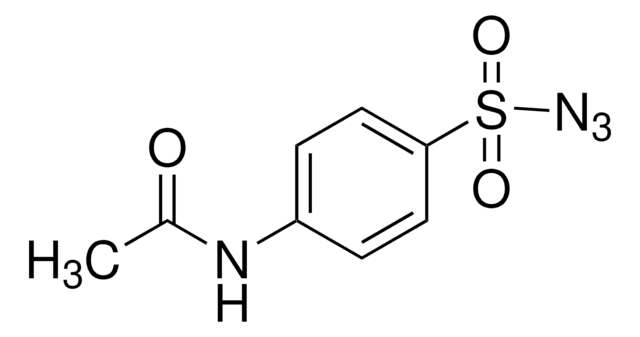
![1,5-Diazabicyclo[4.3.0]non-5-ene 98%](/deepweb/assets/sigmaaldrich/product/structures/400/401/859b2474-712b-4448-b231-74d0bc3203f1/640/859b2474-712b-4448-b231-74d0bc3203f1.png)

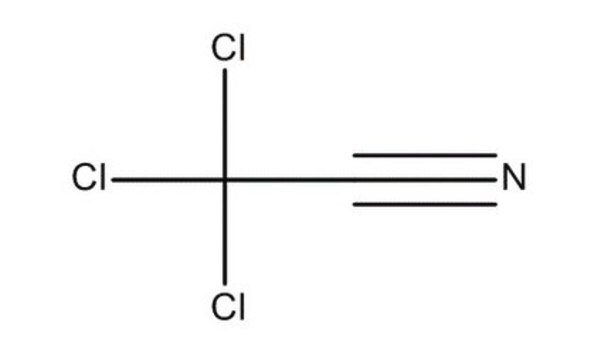



![4-(Acetylamino)phenyl]imidodisulfuryl difluoride ≥98%](/deepweb/assets/sigmaaldrich/product/structures/101/806/3f40354f-e903-4ea0-9654-10872377816c/640/3f40354f-e903-4ea0-9654-10872377816c.png)
